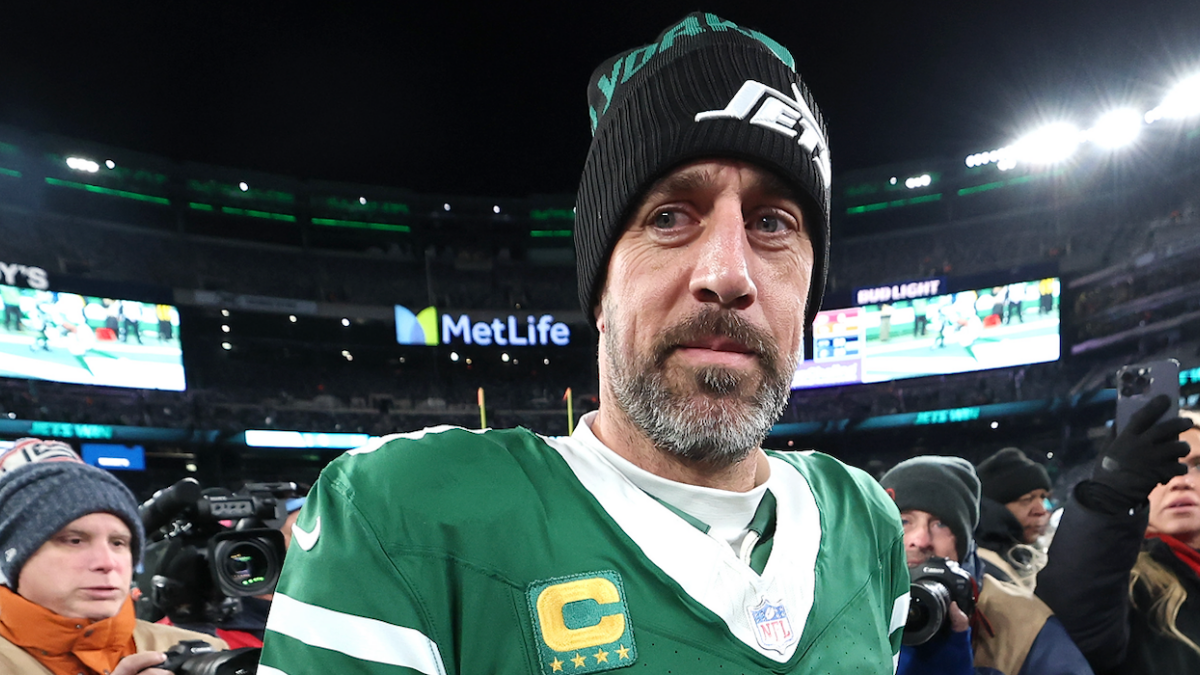Navigating the Steelers’ Quarterback Quest: The Aaron Rodgers Chapter
The Pittsburgh Steelers’ quarterback saga for the 2025 NFL season exemplifies a blend of strategic recalibration and adaptive resilience. The unexpected addition of veteran Aaron Rodgers closes a winding chapter marked by anticipation, recalibrations, and a search for stability at a critical position. This analysis unpacks the multifaceted dimensions surrounding Rodgers’ signing, exploring the backstory, contract intricacies, team dynamics, and the broader implications for Pittsburgh’s football future.
From Contingency to Centerpiece: Rodgers’ Emergence
Initially positioned as a fallback option, Aaron Rodgers was reportedly the Steelers’ third quarterback choice during this offseason’s pursuit. The front office’s initial targets proved elusive, thrusting Rodgers—a four-time NFL MVP and storied veteran—into the spotlight not as the first pick but increasingly as the primary solution. This unexpected journey from Plan C to the starting quarterback spot highlights the fluidity and unpredictability of NFL team-building.
This turn serves as both a pragmatic and symbolic move. Pragmatically, Rodgers’ deep well of experience and on-field IQ offer the Steelers an immediate anchor at quarterback after seasons of inconsistency. Symbolically, it reflects the team’s willingness to pivot decisively when initial plans fall through, embracing veterans whose reputation and skill set can potentially reshape offensive fortunes.
Financial Strategy and Contract Nuances
The one-year deal worth up to $19.5 million, with $10 million guaranteed, strikes a balance between risk management and high-impact investment. Structuring the contract as a single season allows both parties flexibility: Rodgers gains an opportunity to reassert his value and adapt to a new system, while Pittsburgh limits its long-term financial exposure should the experiment falter.
This financial arrangement also underscores the Steelers’ commitment to solving a pressing roster dilemma. Although cautious, the sizeable guaranteed amount sends a clear message about the expected leadership role Rodgers is slated to fill. The incentives, meanwhile, provide motivation aligned with performance goals, blending security with accountability.
Play Style Compatibility: Challenge or Catalyst?
Rodgers’ playing style, marked by his cerebral approach and pocket presence, contrasts with the Steelers’ existing offensive scheme under Mike Tomlin and Arthur Smith. Critics point out potential mismatches in tactical philosophy which, if unaddressed, could hinder Rodgers’ effectiveness within Pittsburgh’s playbook traditionally designed for different skill sets.
However, this divergence might also spark innovation. Rodgers’ storied ability to dissect defenses, extend plays, and selectively distribute the ball could inspire offensive adaptations. The coaching staff has an opportunity to recalibrate their schemes, incorporating more Rodgers-centric tactics that may unlock latent offensive potential and reinforce team synergy.
The Patience Behind the Signing
Rodgers’ arrival was far from a straightforward transaction. The protracted negotiations and physical assessments underscored the complexity of aligning veteran ambitions with organizational goals. Rumors of contingency plans during this liminal period reveal the Steelers’ prudence in preparing for multiple outcomes while securing flexibility.
Ultimately, Rodgers passing the physical and signing before minicamp allowed the Steelers to close a chapter brimming with uncertainty. This resolution grants the team and fans clarity, allowing focus to shift fully to preparation and strategic development ahead of the season.
Strategic Ripples: Building Around Rodgers
Securing Rodgers does not mark an endpoint but rather the start of a strategic campaign to build a complementary offensive roster. Completing the quarterback puzzle involves reinforcing his support network, with the reported pursuit of veterans like Allen Lazard signaling efforts to surround Rodgers with trusted weapons familiar from previous affiliations.
Such targeted acquisitions aim to accelerate Rodgers’ integration and elevate offensive production, blending experience with chemistry. This pursuit reflects a sophisticated approach, recognizing that quarterback performance is deeply intertwined with the quality and fit of the surrounding cast.
Calculated Optimism Amidst Uncertainties
The Steelers’ embrace of Aaron Rodgers is a calculated gamble—an intersection of necessity, opportunity, and cautious optimism. The short-term, well-compensated contract mitigates long-term risks while leveraging immediate upside in leadership and skill. Nevertheless, challenges persist, particularly in harmonizing playing philosophies and revitalizing an offense adapting to a new quarterback dynamic.
Rodgers’ tenure with Pittsburgh will test the team’s adaptability, coaching ingenuity, and ability to coalesce around a quarterback who arrived as a third option but now bears the mantle of franchise leader. His presence concludes an offseason marked by suspense but also plants a seed for possible resurgence.
Looking Ahead: The 2025 Season as a Turning Point
This chapter of the Steelers’ quarterback evolution illustrates the unpredictable nature of professional sports, where plans shift and resilience defines success. By securing Rodgers, Pittsburgh has at last filled a critical void—equipping itself with a leader whose career experience and football intellect may inspire renewed ambition.
The 2025 season will serve as a litmus test for the integration of veteran prowess with team identity. The Steelers’ willingness to adapt, invest, and innovate around Rodgers reflects a pragmatic leadership style poised to shape not just individual games, but the team’s trajectory in a competitive NFL landscape. The outcome remains uncertain, but the narrative is now richer and charged with anticipation.

